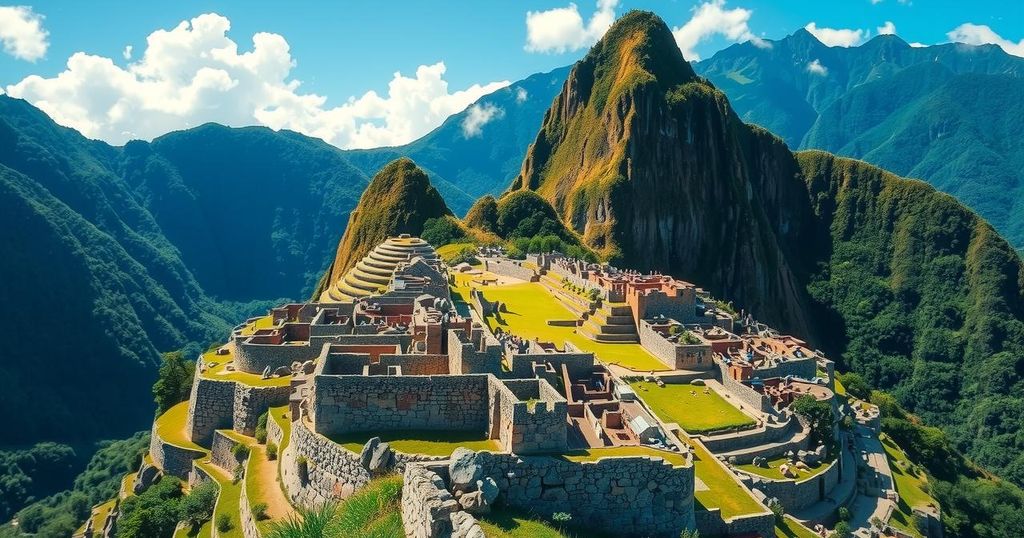Technology
AMAZON, AN, ANE ALENCAR, BRAZIL, BRAZILIAN FOREST SERVICE, DEFORESTATION, ENVIRONMENT, ENVIRONMENTAL PROTECTION, GOVERNMENT FUNDING, IMAFLORA, INSTITUTE OF FOREST AND AGRICULTURAL MANAGEMENT AND CERTIFICATION, IPAM, LEONARDO MARTIN SOBRAL, LU, LULA DA SILVA, MONGABAY, SFB, SOUTH AMERICA, SUSTAINABLE DEVELOPMENT
Jamal Walker
0 Comments
Brazil’s Ambitious Goals for Forest Management in the Amazon
Brazil aims to expand forest management in the Amazon through concessions, targeting an increase from 1.3 million hectares to 5 million hectares by 2026. The Public Forest Management Law enhances sustainable logging practices while addressing illegal logging challenges. Partnerships with organizations and new carbon credit legislation are instrumental in this endeavor. However, traditional community views and regulatory obstacles present ongoing challenges to achieving these environmental and economic goals.
In 2006, Brazilian President Lula da Silva’s administration enacted the Public Forest Management Law to implement a forest concession scheme that regulates logging activities in the Amazon. Forest management aims to allow selective logging of valuable tree species, with the area designated for logging to be left untouched for 30 to 40 years for regeneration. The current government seeks to nearly quadruple the area under federal concessions by 2026 to address earlier shortcomings in concession targets.
Despite its intent, timber management is often not perceived by traditional communities as a conservation method. In response to escalated deforestation rates in the early 2000s, the Brazilian government introduced forest timber management as a mitigation strategy. The Public Forest Management Law established guidelines for sustainable forest use and created the Brazilian Forest Service (SFB) to oversee management concessions in public forest areas.
“Forest management is very different from deforestation. While the former removes only a few trees of commercial value from a given area, the latter eliminates all trees and converts the forest into an agricultural area,” stated Ane Alencar, director of science at the Amazon Environmental Research Institute (IPAM). This approach allows for controlled extraction, typically between three to six trees per hectare, while maintaining biodiversity.
Management involves specific techniques to minimize damage to the ecosystem, including careful planning of tree felling to evade disturbance to surrounding flora. Timber extraction in concessioned areas is regulated by an annual growth index which dictates how much can be harvested per hectare, ensuring ecological balance.
Despite the foundation laid nearly two decades ago, significant progress in forest management has been minimal. Currently, only 1.3 million hectares have been designated for timber management from a target of 44 million hectares. The challenge remains formidable as the Amazon continues to face illegal logging practices.
Looking forward, the federal government has set an ambitious goal of establishing 5 million hectares of timber management concessions by 2026. This includes the issuance of forest restoration concessions in previously degraded forest areas and partnerships with organizations like Imaflora to accelerate these efforts.
“Forest management concessions generate employment and income, and in many Amazonian municipalities they are the main employer,” noted Renato Rosenberg, director of concessions and monitoring at the SFB. The new carbon credits legislation aims to make public forest concessions more economically viable as part of this broader initiative.
Nonetheless, experts like Paulo Amaral from Imazon express skepticism about the viability of carbon credit generation through such concessions. “In that type of concession, the main product is timber, while carbon is a by-product,” he commented, highlighting a potential contradiction in carbon credit applications.
The efforts to replace illegal logging with regulated management must navigate significant barriers, including the need for land designation and addressing historical issues of land ownership and environmental crime. The absence of legal clarity on public land has been detrimental to efforts to mitigate deforestation and promote responsible use.
Additionally, policy proposals such as bill 2550/2021 aim to facilitate financial credits for timber management but face opposition and challenges within the legislative process. An adequate balance between environmental sustainability and community rights is necessary for effective policy design.
The SFB acknowledges the complexity of managing diverse community interests surrounding designated lands. “Coordinating incentives and interests is not a trivial process,” Rosenberg remarked. This complexity necessitates broad collaboration among multiple stakeholders to establish effective governance.
Many traditional communities view environmental stewardship through a lens that prioritizes ecological integrity over economic profits. Fábio Martins of Rede Cerrado emphasizes the importance of recognizing traditional perspectives in forest management conversations. This awareness can foster sustainable practices that both protect the rainforest and support local livelihoods.
To succeed in forest management initiatives, it is crucial to promote the ecological and economic value of intact forests. “As long as the rainforest is worth more if replaced by agricultural use, it will be difficult to maintain it,” concluded Alencar, indicating that sustainable economic activities must align with conservation efforts to protect the Amazon.
The Brazilian government’s renewed ambitions for forest management in the Amazon aim to significantly increase concessions by 2026, addressing past shortcomings while fostering sustainable practices. Despite the challenges posed by illegal logging and regulatory complexities, the integration of traditional community perspectives and innovative carbon credit initiatives may support a strategic path forward. The overarching goal remains to foster a healthy balance between economic development and environmental conservation, ensuring the Amazon’s future vitality.
Original Source: news.mongabay.com




Post Comment